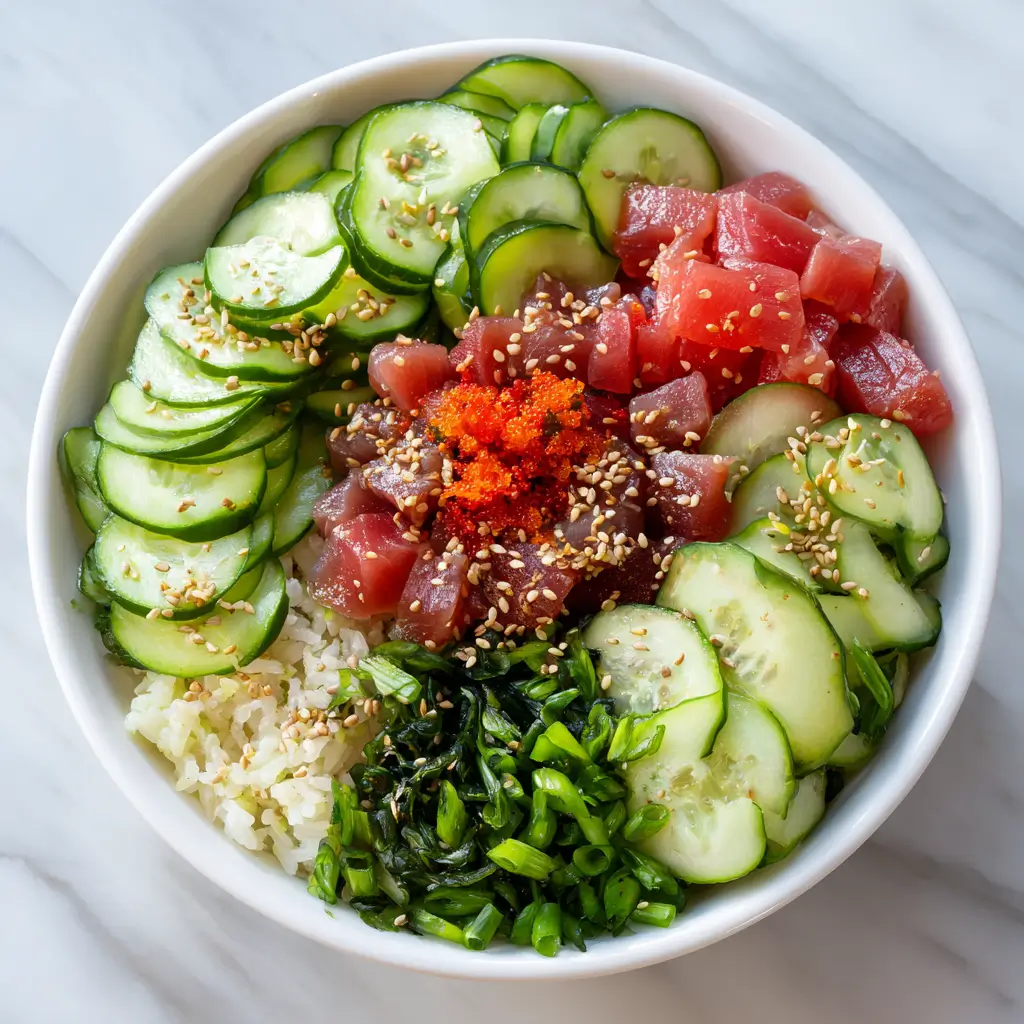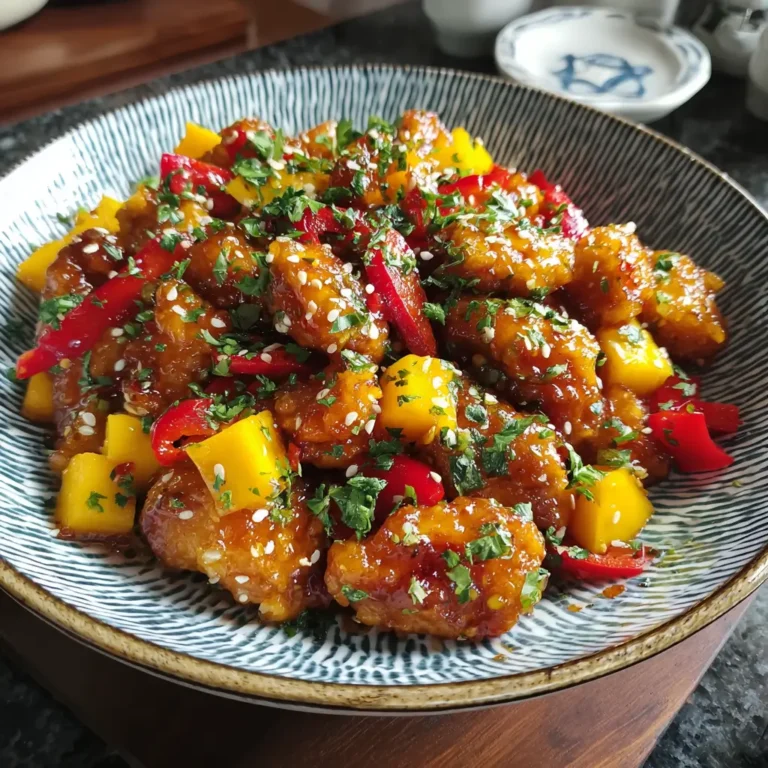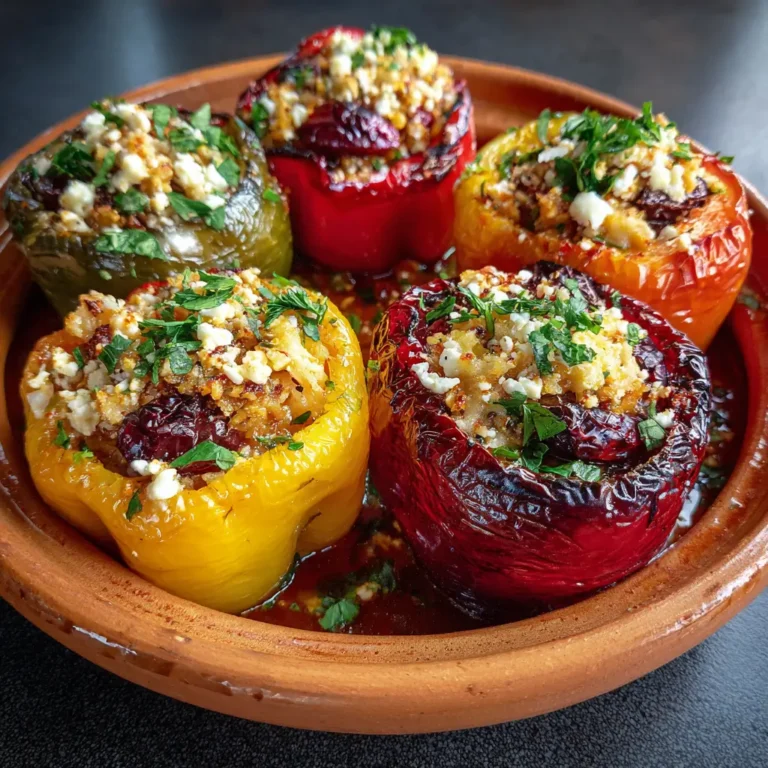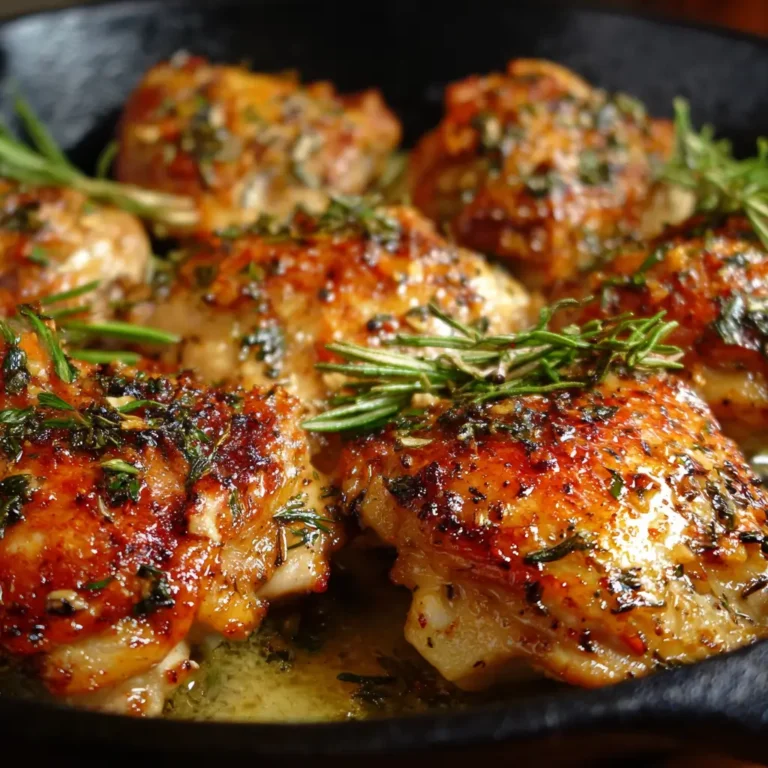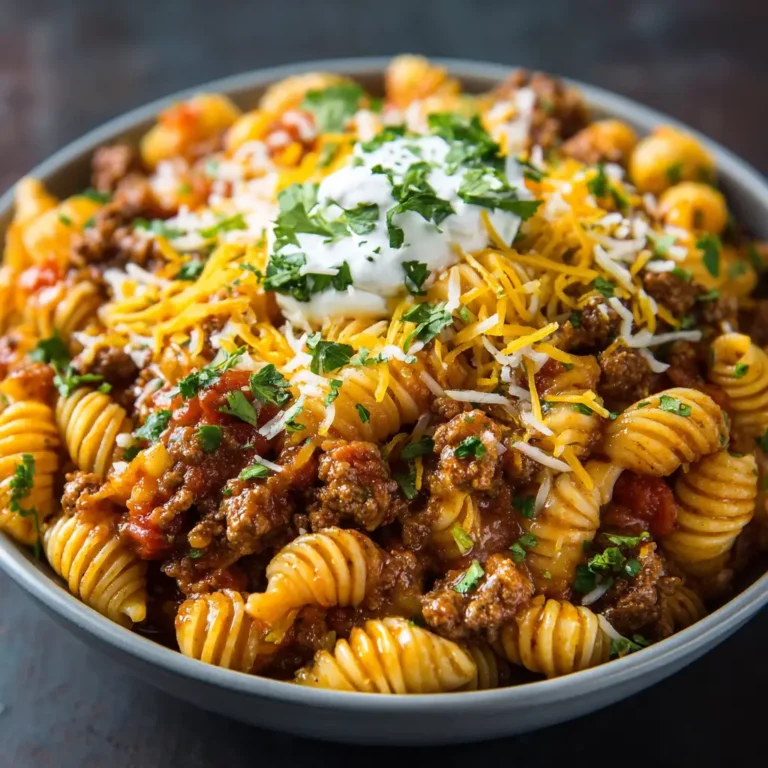Tuna Cucumber Sushi Bowls
Introduction
Welcome to a refreshing and modern twist on traditional Japanese cuisine: Tuna Cucumber Sushi Bowls. This vibrant, healthy, and satisfying dish combines the clean flavors of fresh tuna, crisp cucumbers, and seasoned sushi rice in a deconstructed bowl format—perfect for those who love sushi but want something quick, easy, and less messy to prepare at home. Whether you’re looking for a low-carb alternative to classic sushi rolls, a high-protein lunch option, or simply a colorful meal that’s as beautiful as it is delicious, these Tuna Cucumber Sushi Bowls are sure to impress.
Beyond their visual appeal, these bowls offer a customizable base that allows you to tailor ingredients to your taste and dietary preferences. From spicy mayo drizzles to avocado slices and pickled ginger, each component adds layers of flavor, texture, and nutrition. Plus, they’re ideal for meal prepping, entertaining guests, or enjoying a gourmet-style dinner without spending hours in the kitchen. Let’s dive into everything you need to know about crafting the perfect Tuna Cucumber Sushi Bowl—from history and ingredients to variations, health benefits, and expert tips.
The History
Sushi, as we know it today, has roots stretching back centuries in Japan. Originally developed as a method of preserving fish by fermenting it with rice and salt (a technique known as narezushi), sushi evolved over time into a more immediate culinary delight. By the Edo period (1603–1868), chefs in Tokyo (then Edo) began serving fresh fish atop vinegared rice, giving birth to what we now call nigiri. The concept of rolled sushi (maki) also gained popularity during this era.
In the 20th century, sushi crossed international borders and underwent numerous adaptations to suit global palates. In the United States, creative interpretations like the California roll emerged, introducing avocado and imitation crab. As health-conscious eating trends grew, so did demand for lighter, low-carb versions of beloved dishes—including sushi.
The Tuna Cucumber Sushi Bowl is part of this modern evolution. It reflects the growing popularity of “sushi bowls” or “poke-inspired” meals—a fusion trend heavily influenced by Hawaiian poke culture, where raw fish is served over rice with various toppings. Deconstructing the sushi roll into a bowl format not only makes preparation easier but also enhances portion control and ingredient visibility. Using cucumber as a partial or complete substitute for rice caters to keto, paleo, and gluten-free diets, making this dish a symbol of contemporary culinary innovation rooted in tradition.
Ingredients Breakdown
The beauty of Tuna Cucumber Sushi Bowls lies in their balance of textures, temperatures, and umami-rich flavors. Each ingredient plays a crucial role in creating a harmonious and satisfying meal. Here’s a detailed look at the core components:
- Fresh Sushi-Grade Tuna: The star of the dish. Must be labeled “sushi-grade” or “sashimi-grade” to ensure it’s safe for raw consumption. Look for deep red color, firm texture, and minimal odor.
- Cucumbers: English or Persian cucumbers work best due to their thin skin, minimal seeds, and crisp texture. They serve either as a rice substitute (when spiralized or diced) or as a crunchy garnish.
- Sushi Rice (or Alternatives): Short-grain Japanese rice seasoned with rice vinegar, sugar, and salt. For lower-carb options, cauliflower rice, quinoa, or even kelp noodles can be used.
- Avocado: Adds creaminess and healthy fats. Ripe but firm avocados hold their shape well when sliced.
- Scallions (Green Onions): Provide a mild onion bite and bright color contrast.
- Sesame Seeds: Both white and black sesame seeds add nuttiness and visual flair.
- Nori (Seaweed Sheets): Toasted nori strips bring authentic oceanic flavor and crunch. Can be cut into thin ribbons or crumbled.
- Soy Sauce or Tamari: For seasoning; tamari is a gluten-free alternative.
- Rice Vinegar: Essential for seasoning the rice and adding tanginess.
- Wasabi and Pickled Ginger: Traditional accompaniments that cleanse the palate and enhance flavor complexity.
- Optional Additions: Edamame, radish sprouts, tobiko (flying fish roe), mango, jalapeño, or microgreens can elevate both taste and presentation.
- Drizzle Sauces: Spicy mayo (mayo + sriracha), eel sauce (unagi glaze), ponzu, or yuzu kosho add richness and depth.
Step-by-Step Recipe
Creating Tuna Cucumber Sushi Bowls is simple once you have all your ingredients prepped. Follow these steps for restaurant-quality results at home:
- Prepare the Sushi Rice: Rinse 1 cup of short-grain Japanese rice under cold water until the water runs clear. Cook according to package instructions (usually 1:1.25 rice-to-water ratio). Once cooked, let it sit covered for 10 minutes. In a small saucepan, heat 2 tablespoons rice vinegar, 1 tablespoon sugar, and ½ teaspoon salt until dissolved. Fold this mixture into the warm rice gently using a wooden spatula. Cover and cool to room temperature.
- Prep the Cucumbers: Wash and dry 1–2 English cucumbers. You can use them in three ways:
- Diced: Cut into small cubes and toss with a pinch of salt to draw out moisture; drain after 10 minutes.
- Spiralized: Use a spiralizer to create noodle-like strands for a low-carb base.
- Scooped Boats: Halve lengthwise and scoop out the seeds to form edible “boats” for serving.
- Cut the Tuna: Using a very sharp knife, slice sushi-grade tuna into ½-inch cubes. Pat dry before cutting to maintain cleanliness and texture. Keep chilled until ready to serve.
- Chop the Vegetables: Thinly slice scallions, dice avocado just before assembly to prevent browning, and julienne any additional veggies like carrots or radishes.
- Toast the Nori and Sesame Seeds: Lightly toast nori sheets over an open flame or in a dry pan until crisp, then cut into thin strips. Dry-toast sesame seeds in a skillet over medium heat until golden and fragrant (about 2–3 minutes).
- Make the Drizzle (Optional): Mix 2 tablespoons mayonnaise with 1–2 teaspoons sriracha for spicy mayo. Alternatively, warm store-bought unagi sauce for a sweet-savory touch.
- Assemble the Bowls: In each serving bowl, start with a base of sushi rice (or cucumber noodles). Arrange tuna cubes neatly on top. Surround with cucumber, avocado, scallions, edamame, and other toppings. Sprinkle generously with sesame seeds and nori. Add a small mound of pickled ginger on the side.
- Finish and Serve: Drizzle with spicy mayo or soy sauce. Serve immediately with chopsticks and optionally a side of wasabi. Encourage mixing just before eating for full flavor integration.
Tips
- Always Use Sushi-Grade Fish: Never substitute regular raw tuna from the grocery seafood counter unless explicitly labeled for raw consumption. Improper handling can lead to foodborne illness.
- Keep Ingredients Cold: Store tuna and other perishables refrigerated until the moment of assembly to preserve freshness and safety.
- Season Rice While Warm: The vinegar mixture absorbs best when the rice is still warm. However, don’t assemble the bowl with hot rice—it will wilt the raw fish and vegetables.
- Don’t Overcrowd the Bowl: Balance is key. Too many ingredients can mask individual flavors. Aim for visual symmetry and thoughtful layering.
- Use Fresh Lime or Yuzu Juice: A squeeze of citrus just before serving brightens the entire dish and cuts through richness.
- Invest in Good Knives: A sharp chef’s knife ensures clean cuts on tuna and vegetables, improving both appearance and texture.
- Customize Portion Sizes: These bowls can be made as light appetizers or hearty entrées depending on protein and rice amounts.
- Meal Prep Smartly: Cook rice and prep vegetables ahead of time, but assemble bowls fresh to avoid sogginess.
Variations and Customizations
One of the greatest strengths of Tuna Cucumber Sushi Bowls is their adaptability. Below are popular twists to suit different tastes and dietary needs:
- Vegetarian/Vegan Version: Replace tuna with marinated tofu, tempeh, or hearts of palm. Use tamari instead of fish-based sauces and skip bonito flakes if present.
- Spicy Tuna Bowl: Mix diced tuna with spicy mayo, a dash of soy sauce, and finely chopped scallions before placing on the bowl.
- Keto/Low-Carb Option: Skip the rice entirely and double up on cucumber noodles, avocado, and leafy greens like baby spinach or arugula.
- Poke-Style Fusion: Add pineapple chunks, crushed macadamia nuts, and a coconut aminos-based marinade for a tropical Hawaiian vibe.
- Tempura Crunch: Top with crispy tempura flakes or panko breadcrumbs for added texture.
- Seafood Medley: Combine tuna with salmon, shrimp, or scallops for a luxurious mixed-seafood experience.
- Breakfast Sushi Bowl: Swap raw tuna for smoked salmon, add a soft-boiled egg, and season with everything bagel seasoning.
- Gluten-Free Friendly: Ensure all sauces (especially soy sauce) are certified gluten-free. Use tamari or coconut aminos as substitutes.
- Extra Umami Boost: Add rehydrated shiitake mushrooms, miso paste to the rice, or a sprinkle of bonito flakes.
Health Considerations and Nutritional Value
Tuna Cucumber Sushi Bowls can be a highly nutritious meal when balanced properly. Here’s a breakdown of the health aspects:
- High-Quality Protein: Tuna is rich in lean protein, essential for muscle repair and satiety. It also contains omega-3 fatty acids (EPA and DHA), which support heart and brain health.
- Low in Carbohydrates (When Modified): By substituting rice with cucumber or cauliflower rice, the dish becomes suitable for low-carb and ketogenic diets.
- Healthy Fats: Avocado and sesame seeds contribute monounsaturated fats and vitamin E, promoting skin health and reducing inflammation.
- Fiber-Rich: Cucumbers, avocado, and optional additions like edamame provide dietary fiber, aiding digestion and blood sugar regulation.
- Vitamins and Minerals: Cucumbers offer hydration and vitamin K; seaweed provides iodine for thyroid function; green onions add vitamin C and antioxidants.
- Mindful Sodium Intake: Soy sauce and processed condiments can be high in sodium. Opt for reduced-sodium versions or use sparingly. Coconut aminos are a lower-sodium alternative.
- Mercury Concerns: Tuna, especially bigeye and yellowfin, may contain higher levels of mercury. Limit consumption to 2–3 servings per week, particularly for pregnant women and young children. Consider swapping in salmon or cooked shrimp occasionally.
- Food Safety: Because this dish uses raw fish, proper sourcing and storage are critical. Always buy from reputable suppliers, keep below 40°F (4°C), and consume within 24 hours of preparation.
A typical serving (with ½ cup rice, 4 oz tuna, avocado, cucumber, and standard toppings) contains approximately:
- Calories: 400–500
- Protein: 30–35g
- Fat: 15–20g (mostly unsaturated)
- Carbohydrates: 35–45g (reduced significantly without rice)
- Fiber: 5–7g
- Sodium: 600–900mg (varies with soy sauce usage)
Ingredients
Serves: 2 | Prep Time: 20 minutes | Total Time: 30 minutes
- 1 cup short-grain sushi rice (or 2 cups riced cauliflower for low-carb)
- ¼ cup water (for cooking rice)
- 2 tbsp rice vinegar
- 1 tbsp granulated sugar
- ½ tsp salt
- 8 oz sushi-grade ahi tuna, cubed
- 1 large English cucumber, peeled and spiralized or diced
- 1 ripe avocado, sliced
- 2 scallions, thinly sliced
- 1 sheet nori, toasted and cut into strips
- 1 tbsp sesame seeds (white or black), toasted
- 2 tbsp mayonnaise (preferably Kewpie)
- 1 tsp sriracha (optional, for spicy mayo)
- 1 tbsp soy sauce or tamari (plus extra for serving)
- 1 tsp toasted sesame oil
- Pickled ginger, for garnish
- Wasabi paste, to taste
- Lime wedges, for serving
Directions
- In a small pot, rinse the sushi rice under cold water until the water runs clear. Drain and add to the pot with ¼ cup water. Bring to a boil, then reduce to low, cover, and simmer for 18–20 minutes until water is absorbed. Remove from heat and let stand, covered, for 10 minutes.
- While rice cooks, prepare the sushi vinegar: In a small saucepan, combine rice vinegar, sugar, and salt. Heat over low until sugar dissolves. Remove from heat.
- Fluff the cooked rice with a fork and gently fold in the vinegar mixture. Spread on a plate or tray to cool to room temperature.
- Meanwhile, prepare the cucumber: If using as a base, spiralize or dice and lightly salt; set aside to drain excess moisture.
- In a small bowl, mix mayonnaise and sriracha to make spicy mayo. Set aside.
- Pat tuna cubes dry and place in a separate bowl. Drizzle with ½ tsp soy sauce and sesame oil; gently toss. Chill until ready to use.
- Toast sesame seeds in a dry skillet over medium heat until golden (2–3 minutes). Toast nori sheet briefly over flame or in oven until crisp; cut into thin strips.
- To assemble: Divide cooled sushi rice between two bowls. Top with cucumber, avocado, marinated tuna, scallions, and pickled ginger.
- Sprinkle with toasted sesame seeds and nori strips. Drizzle with spicy mayo and additional soy sauce if desired.
- Serve immediately with lime wedges, extra wasabi, and chopsticks. Squeeze lime juice over the bowl just before eating for a zesty finish.
FAQ
Can I make Tuna Cucumber Sushi Bowls ahead of time?
Yes, but with caveats. You can prep rice, chop vegetables, and make sauces up to one day in advance. However, always assemble the bowls fresh to prevent sogginess and maintain food safety with raw fish.
Where can I buy sushi-grade tuna?
Look for it at high-end supermarkets (like Whole Foods), specialty fish markets, or reputable online seafood retailers. Ask the fishmonger for recommendations and confirm it’s safe for raw consumption.
Are there vegetarian alternatives to tuna?
Absolutely! Try marinated tofu, jackfruit, mushrooms, or store-bought plant-based tuna. Season with soy sauce, sesame oil, and nori for authenticity.
Can I cook the tuna instead of serving it raw?
Yes. Pan-sear the tuna steaks rare or sear-tuna style (tataki), then chill and cube. This reduces risk while maintaining tenderness.
How long do leftovers last?
If stored separately, components last 2–3 days. Once assembled, consume within 2 hours at room temperature or refrigerate and eat within 12 hours. Raw fish should not be kept longer than 24 hours.
Is this dish gluten-free?
It can be! Use tamari instead of soy sauce and verify that all other ingredients (like spicy mayo) are certified gluten-free.
Can I freeze this dish?
No. Freezing alters the texture of raw fish and vegetables. Best enjoyed fresh.
What can I use instead of nori?
While nori adds authentic flavor, you can omit it or use roasted seaweed snacks as a substitute. Some people enjoy wakame or dulse flakes for a similar umami punch.
Summary
Tuna Cucumber Sushi Bowls blend the elegance of Japanese cuisine with the convenience of modern bowl meals, offering a fresh, nutritious, and visually stunning dining experience. Packed with premium ingredients and endless customization options, they’re perfect for health enthusiasts, sushi lovers, and busy home cooks alike.
